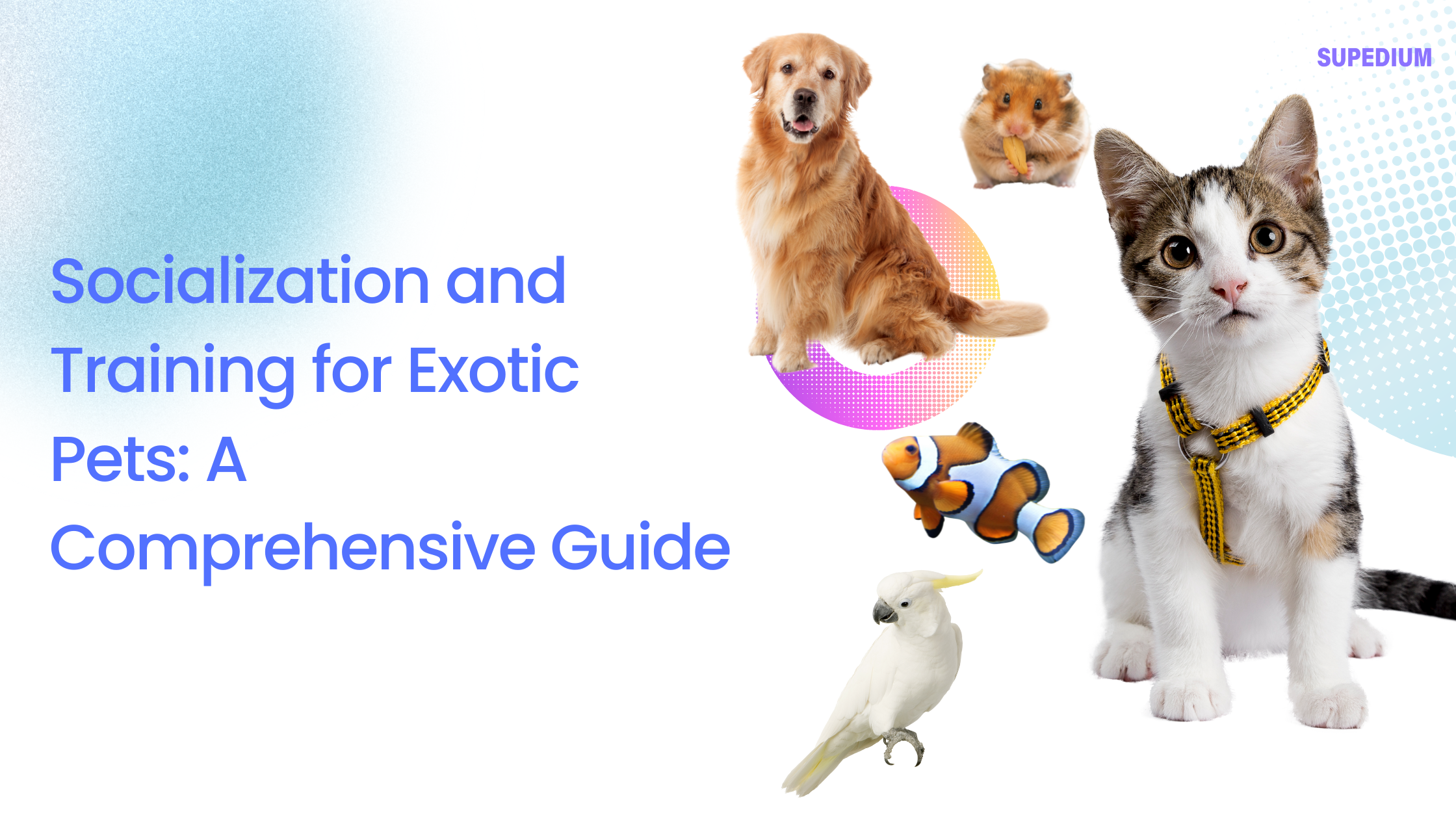Table of Contents
![]()
Exotic pets, ranging from reptiles and birds to small mammals, require a unique approach to socialization and training compared to more common pets like dogs and cats. Proper socialization and training are crucial for the well-being of these animals, enhancing their quality of life and strengthening the bond between the pet and its owner. This article provides a detailed guide on how to effectively socialize and train exotic pets.
Understanding Exotic Pets
Behavioral Characteristics
Exotic pets come with a diverse range of natural behaviors and instincts that differ significantly from more traditional pets. For instance, reptiles may have specific temperature and humidity needs, while birds often require mental stimulation and social interaction. Understanding these behavioral characteristics is essential for effective training and socialization.
Socialization Needs
The socialization needs of exotic pets can vary widely depending on the species. Social species, like certain types of birds, thrive on interaction and can become very attached to their owners. Conversely, solitary species such as many reptiles may require less social interaction but still benefit from a gradual introduction to new experiences and environments.
Socialization Techniques
Early Socialization
Starting socialization early is crucial for exotic pets. Young animals are generally more adaptable to new experiences, making early exposure to different people, environments, and handling practices essential. For instance, handling a young reptile gently and regularly can help it become accustomed to human interaction, reducing stress and fear in adulthood.
Desensitization
Desensitization involves gradually exposing the pet to new stimuli in a controlled manner to reduce fear and aggression. For example, if a bird is afraid of new objects, introducing these objects slowly and pairing them with positive experiences, such as treats, can help the bird build a positive association. This method helps in mitigating anxiety and encouraging a more relaxed demeanor.
Enrichment Activities
Enrichment is vital for maintaining the mental and physical health of exotic pets. Providing toys, puzzles, and interactive activities can keep them engaged and prevent boredom-related behaviors. For instance, reptiles may benefit from hiding spots and climbing structures, while birds may enjoy foraging toys and puzzles.
Training Methods
Basic Training Principles
Positive reinforcement is the cornerstone of effective training for exotic pets. Rewarding desired behaviors with treats, praise, or other incentives encourages the pet to repeat those behaviors. Consistency and patience are key, as exotic pets may take longer to learn new commands or routines compared to more traditional pets.
Species-Specific Training Techniques
- Reptiles: Training reptiles often focuses on habituation and handling. For example, getting a snake used to being handled involves gently and regularly touching it, gradually increasing the duration of the handling sessions. Training for medical care, such as nail trimming, can be achieved by rewarding the reptile for calm behavior during these procedures.
- Birds: Birds can be trained to perform tricks, follow commands, and interact positively with their human companions. Techniques such as clicker training, where a click sound is used to mark desired behaviors followed by a treat, are effective. Socialization with humans and other pets can also be facilitated by gradually introducing the bird to new situations and rewarding calm behavior.
- Small Mammals: Small mammals like rabbits and ferrets can be trained for behaviors such as litter training and basic commands. Bonding exercises, such as hand-feeding or gentle play, can enhance the pet’s comfort with human interaction. Addressing behavioral issues may involve redirecting negative behaviors and reinforcing positive actions.
Addressing Behavioral Issues
Common behavioral issues in exotic pets, such as aggression or fearfulness, can often be addressed through behavior modification techniques. Identifying the triggers for these behaviors and applying gradual desensitization strategies can help. For instance, if a bird is aggressive towards certain people or situations, working on desensitizing the bird to these triggers and rewarding calm behavior can be effective.
Health and Safety Considerations
Preventing Stress
Recognizing and minimizing stress is essential for the well-being of exotic pets. Stress can manifest in various ways, including changes in behavior or health problems. Creating a comfortable environment with appropriate hiding spaces and avoiding sudden changes can help reduce stress levels.
Medical Training
Training exotic pets to accept veterinary care can be beneficial for both the pet and the owner. For example, acclimating a reptile to being handled for medical exams or teaching a bird to accept medication can make routine health care procedures less stressful.
Safety Precautions
Safe handling practices are crucial for both the pet and the owner. Ensuring that the pet’s environment is secure and that the owner is knowledgeable about the specific needs and behaviors of the pet can prevent accidents and ensure a positive training experience.
Case Studies and Examples
Successful Socialization Stories
- Reptile: A boa constrictor successfully adapted to regular handling through gradual and gentle exposure, resulting in a more relaxed and manageable pet.
- Bird: A parrot learned to interact positively with household members and other pets through clicker training and gradual exposure to new experiences.
Lessons Learned from Training Challenges
Training challenges, such as addressing aggressive behaviors or fearfulness, often require patience and persistence. Adapting techniques to suit the specific needs of the pet and recognizing progress, even if slow, are important for overcoming these challenges.
Resources and Support
Professional Trainers and Behaviorists
Consulting with professionals who specialize in exotic pet training can provide valuable insights and guidance. These experts can help address specific behavioral issues and offer personalized training plans.
Books, Articles, and Online Resources
Numerous resources are available for pet owners seeking to learn more about exotic pet care. Recommended readings, online articles, and forums can provide additional information and support.
Training Tools and Equipment
Using appropriate training tools and equipment can enhance the effectiveness of training. For example, clickers, treat dispensers, and enrichment toys are valuable for various types of exotic pets.
Conclusion
Socialization and training are essential aspects of caring for exotic pets. By understanding the specific needs of different species, applying effective socialization and training techniques, and considering health and safety, pet owners can ensure their exotic pets lead happy, well-adjusted lives. Commitment and dedication to these practices not only improve the pet’s quality of life but also strengthen the bond between the pet and its owner.
Share This





Be the first to comment